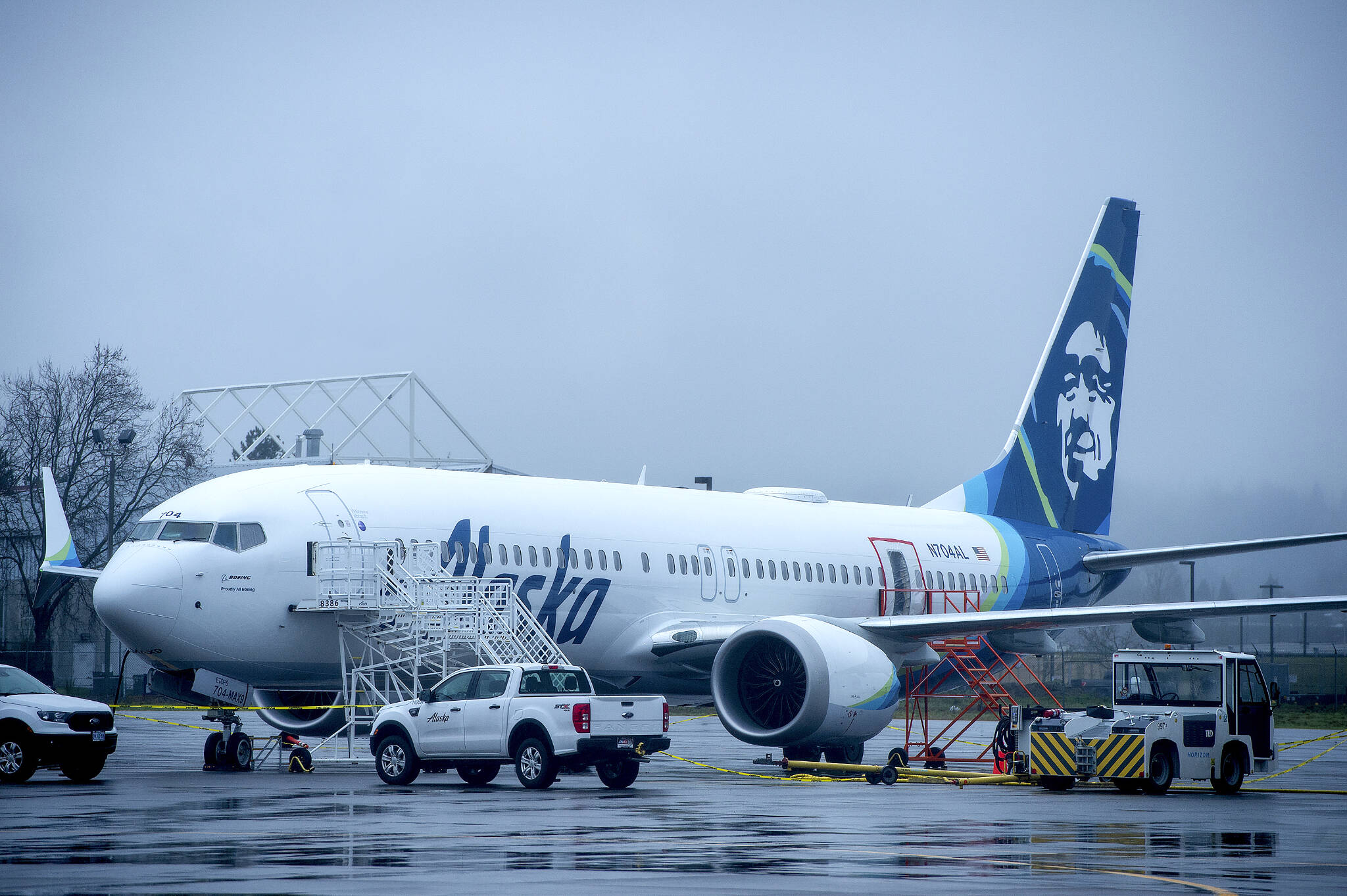EVERETT — A year after a door plug blew out of a 737 Max after taking off from Portland, Boeing detailed the strides the company said it has made in its safety protocols.
In response to the door plug blow out, the Federal Aviation Administration required Boeing to create a Safety and Quality Plan to improve the company’s safety management and quality assurance.
The company shared updates to the safety plan on Jan. 3.
Immediately following the incident, Boeing revised its build plans and training processes, while instituting additional controls to prevent defects in door plugs and similar structures, according to a company summary of the plan released in May. It also updated its software for reporting safety issues, known as Speak Up, with reports increasing by more than 500% in the first two months of 2024 compared to the same period in 2023.
Since beginning the safety plan, Boeing has increased the number of its inspection points, improved its Speak Up software and conducted mandatory product safety and quality training for all employees, the company said Friday. It also plans to revise thousands of its internal documents to simplify the assembly and inspection processes, addressing concerns raised during National Transportation Safety Board investigative hearings.
Boeing has already implemented initial simplified installation plans for 737 production, the company said.
The likely cause of the door plug blow out was four missing bolts, which would normally hold the plug in place. In August 2023, the fuselage of the 737 Max, manufactured by Kansas-based Spirit AeroSystems, arrived at Boeing’s Renton factory with a number of damaged rivets on the door plug, according to a preliminary report the NTSB released in February 2024. Boeing’s Everett plant is not involved in building the 737.
To fix the rivets, workers opened the door plug at the Renton factory and reinstalled without replacing the four bolts, the preliminary report said. In August 2024, Elizabeth Lund, senior vice president of quality for commercial planes at Boeing, testified at an NTSB hearing that the opening should have been documented in the company’s system of record, known as the Common Manufacturing Execution System. Recording the removal in that system would have triggered inspections of the door plug.
Boeing has significantly reduced defects in 737 fuselage assembly at Spirit AeroSystems by increasing inspection points there, the company said Friday. It also put new random quality checks of documented removals into place and implemented a new work in progress system to track and secure parts for manufacturing work that is not yet complete.
The NTSB’s investigation, still underway, could take another year to complete. At least one civil lawsuit was filed against Boeing following the blow out.
The door plug incident was the latest in a line of issues surrounding the troubled 737 Max, launched in 2017. In 2018 and 2019, two 737 Max crashes killed 346 people and grounded the plane for 20 months due to safety concerns.




